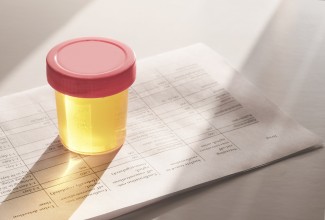A Global Perspective on Workplace Drug Testing

Workplace drug testing around the world is quite varied and must address a number of regionally unique factors that affect the collection and processing of suitable test specimens.
There are a few challenges to international drug testing that may arise during the strict specimen collection and handling process. It is extremely important to maintain the integrity of the testing protocol and the security of the specimens as they move through the collection and test analysis process. This procedure, often called the “chain of custody,” protects the employee’s rights of accuracy. Some of the challenges include:
o Laws – Is workplace testing permitted or restricted? What drugs are included in the tests? Are all testing methods allowed? Are there health laws related to the handling of human specimens?
o Language – It is important that everyone involved in drug testing has the ability to fully communicate and understand their role in the specimen collection process, interpretation of the results, the implications of a positive drug test, and the follow-up process if needed.
o Culture – Are there religious laws affecting collection of human specimens? Are there gender rules affecting the collection of specimens? Are there workplace customs or procedures to follow? Are there holiday observances to be aware of?
Testing Methods
While there are several types of bodily specimens that can tested to detect drug use, urine is the most commonly used workplace testing method internationally with oral fluid testing being the next most frequent. Here is some information on the common testing methods.
Urine
Urine is tested to identify whether there is the presence of drug metabolites (drug residues) that remain in the body after its effects have worn off. Urine testing is an inexpensive and non-invasive testing method that is preferred for the analysis of drug testing specimens. There are some concerns about privacy in the specimen collection process for the modesty of the donor as well as the opportunity for the donor to adulterate or substitute the specimen.
A positive urine drug test does not determine that a person was under the influence of a drug or drugs at the time of the test but can identify that it was possible. It is a generally accepted evidence of recent use.
A urine drug test is not considered to be the best testing method for alcohol due to the fact that alcohol is quickly passed through the body.
Oral Fluids
Oral fluid or saliva testing is collected from the mouth to detect the presence of drugs and alcohol. It is among the least invasive testing methods. Additionally, while samples are easy to collect via a cheek swab, it is harder to cheat with this mode. This method is significant for determining current use because drugs move quickly into the urine.
Blood
A blood test is used to measure the actual amount of alcohol or drugs in the blood at the time the specimen is collected. Testing blood samples is more accurate at determining recent use of alcohol or drugs than a urine specimen. However, since drugs pass quickly from the blood into the urine, the window of detecting them is shorter than for urine.
Since the collection of blood samples is considered invasive, other non-invasive forms of testing, such as urine or saliva specimens are sometimes preferred. There are some countries or regions where blood testing is a mandated testing method. In the cases of traumatic injury or fatality from an accident, blood specimen testing is the common method to determine intoxication.
Hair
Hair testing is the least invasive method that tests for the presence of drugs. It provides a longer range of detection, up to three months, than does a urine test. As such, this method does not provide evidence of current drug use, only past use of specific drugs. This method may be best utilized for longer term compliance. Hair testing does not detect alcohol use.
Breath
In some parts of the world, breath-alcohol testing is the most common method for determining the amount of alcohol in the blood. Like urine testing, this method is cost effective, non-invasive, reliable, and easily transported and used onsite or in the field.
The employee is tested by blowing into a breath-alcohol test device with the results identifying the level of alcohol in the blood at the time the test was taken. The level is given in a percentage known as the blood alcohol content or BAC. These BAC levels have been correlated with impairment. Many countries of the world identify 0.08% as the level of impairment from alcohol with the range from 0.01% to 0.10%. Some countries have very specific laws regarding the use of the breath-alcohol testing method.
Sweat
The collection of sweat specimens is another type of drug test consisting of an easy-to-apply skin patch that measures drugs in sweat. The patch is typically worn over a period of time and therefore is best used for long-term compliance programs rather than the workplace.
What special considerations are there for workplace drug testing there in your country? Please respond by commenting below.
Please join us for more information on this topic!
Are you interested in learning more information on the global perspective on the drug testing methods and process? Drug Free America Foundation cordially invites you to attend a free live webinar on Tuesday August 18, 2020 (8:00 – 9:00 AM EDT). Mr. Matt Taylor from the U.K. will present Drugs and Alcohol in the Global Workplace – It’s Easy to Get It Wrong!